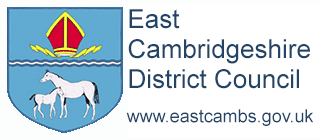Responding to cyberbullying checklist
- Ensure you have a consistent and comprehensive system for monitoring and recording cyberbullying which allows you to analyse incident records, notice any patters and plan and review your response.
- Do pupils and staff understand the basics of keeping themselves safe online, including privacy settings, reporting, and getting material taken down?
- Are staff familiar with the school's processes for responding to cyberbullying?
- Are staff and pupils aware of the ways in which the school provides support for people who are bullied?
- Are people who have been bullied appropriately involved in the decision making and resolution process?
- Do pupils and staff understand which kinds of cyberbullying may be illegal? Do staff know what to do if they suspect cyberbullying activity is illegal?
- Are clear processes and policies in place in relation to searching pupils, confiscating devices and deleting materials?
- What are the consequences for bullying, including cyberbullying in your school? Is the whole school community clear about sanctions?
Managing an Incident and Supporting Young People
Do not suggest to young people that they stop using their computer or mobile phone. Young people are very reliant on technology and suggesting they protect themselves by withdrawing use of their computer or mobile phone will be penalising them further when they have already been victimised.
Support the person who has been cyberbullied and reassure them that it is not their fault and they have done the right thing by reporting the incident. Ensure that the support offered is tailored to the individual allowing sufficient time and using language which is appropriate and you know if understood by the young person.
Offer confidentiality (with the usual child protection exceptions) and listen to how the young person wants to handle the situation. They might be worried that telling you will get them into more trouble with the person doing the bullying. The level of choice will depend on age, but all young people need to feel listed to and to be kept informed about what action is taken. As with any bullying, safeguarding may be an issue, so ensure that you refer to your line manager if you are concerned that this is a safeguarding issue.
- Follow your general protocol for managing an incident.
- East Cambridgeshire District Council has produced a checklist for managing a bullying incident.
- Consider a restorative approach to resolve the incident if appropriate and if appropriately trained staff are available.
- Advise them about the next steps, such as gathering evidence, blocking further content, and identifying the person responsible. Secure evidence with their permission. If you need any further advice about securing evidence please contact the Police on the general 101 enquiry number.
- Try to contain the incident when content has been circulated to other people. Report the incident to the relevant people (such as your manager, your school's anti-bullying co-ordinator, and the student's parents) and to organisations (such as the Internet or mobile provider, your local authority, and, in some cases, the Police).
- Contact the young person's parents or carers in line with your anti-bullying policy.
- Investigate and record all incidents of cyberbullying.
- Work with the person responsible for the bullying once they have been identified to make them aware of the consequences of their actions and try to change their behaviour. Consider anyone who passed on emails or texts or posted responses online.
- Apply disciplinary sanctions as outlined in your behaviour and anti-bullying policy, Consider whether a restorative approach to resolving the matter might be appropriate.
- Consider whether the matter should be reported to the Police - the age of criminal responsibility is ten.
- Advise the child not to reply to the person responsible or to send a nasty message back.
- Advise them to preserve evidence. If you need further advice on this, please contact the Police by phoning 101.
- Advise them to remove the person responsible from their friends list (if they know them) and use built-in privacy tools to block them.
- Offer support and manage the incident in the same way you would normally manage bullying.
Provide details for Childline, the NSPCC or the Samaritans if they would like to speak to someone in confidence about what has happened.

